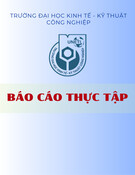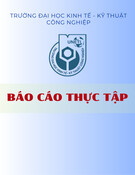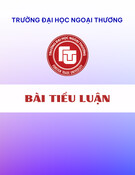
TRƢỜNG ĐẠI HỌC NGÂN HÀNG TP.HỒ CHÍ MINH
------------------------------------------
TRẦN QUỐC VIỆT
CÁC YẾU TỐ ẢNH HƢỞNG ĐẾN CHÊNH LỆCH LỢI SUẤT
CỦA TRÁI PHIẾU DOANH NGHIỆP VIỆT NAM.
KHÓA LUẬN TỐT NGHIỆP
CHUYÊN NGÀNH: TÀI CHÍNH – NGÂN HÀNG
MÃ SỐ: 7340201
TP. HỒ CHÍ MINH, NĂM 2018
NGÂN HÀNG NHÀ NƯỚC VIỆT NAM
BỘ GIÁO DỤC VÀ ĐÀO TẠO

TRƢỜNG ĐẠI HỌC NGÂN HÀNG TP.HỒ CHÍ MINH
------------------------------------------
TRẦN QUỐC VIỆT
CÁC YẾU TỐ ẢNH HƢỞNG ĐẾN CHÊNH LỆCH LỢI SUẤT
CỦA TRÁI PHIẾU DOANH NGHIỆP VIỆT NAM.
KHÓA LUẬN TỐT NGHIỆP
CHUYÊN NGÀNH: TÀI CHÍNH – NGÂN HÀNG
MÃ SỐ: 7340201
NGƢỜI HƢỚNG DẪN KHOA HỌC
TH.S. VŨ THỊ ANH THƢ
TP. HỒ CHÍ MINH, NĂM 2018
NGÂN HÀNG NHÀ NƯỚC VIỆT NAM
BỘ GIÁO DỤC VÀ ĐÀO TẠO

i
ABSTRACT
When it comes to "credit spread," most refer to it as an investment strategy,
while another concept is ignored. Credit spread of corporate bonds is compensation
for recipients in case the company defaults on debts or bankruptcy. This is usually
one of the main bases for investors to valuate prices for this tool when buying and
selling in the market. Therefore, understanding credit coverage in general and the
factors affecting it in particular is essential to provide a basis for professional
investors with solid grounds for valuation and investment. The objective of the
study was to determine factors affecting the difference between the estimated credit
spread and the actual credit spread in the Vietnam bond market while assessing the
direction and magnitude of the impact of these factors. The thesis uses the method
of event study to observe the fluctuation of the difference when specific events
occur beside methods of analyzing descriptive statistics and correlation matrix.
To achieve this goal, the paper asks the following questions:
Beside default risk, what are determinants of credit spread in Vietnam in the
period 2014 - 2017?
How do these factors work? Positive or negative?
These questions will be answered through five chapters of the paper:
Chapter 1:
Introduction
Chapter 2:
Overview of the theory and previous studies
Chapter 3:
The real situation of the corporate bond market in Vietnam and the method
of research.
Chapter 4:
Analysis of research results

ii
Chapter 5:
Conclusions and recommendations
Chapter 01:
In chapter one, in addition to introducing the reasons for choosing the topic
as well as research objectives, the author also clarifies the scope of research,
research subjects and the contributions of the research.
Chapter 02:
In chapter two, the author discusses the theory of credit spread, as well as
summarizes some of the previous scientific papers that relevant to this research.
In the theoretical part of corporate bond credit spreads, the paper refers the
definition of the corporate bond credit spread by the San Francisco Federal Reserve
Bank as well as the formula for determining the credit spread. Factors influencing
the interest spread based on the sum of Lou (2013) are also mentioned in the
theoretical framework. There are 5 traditional factors besides Credit risk that affect
credit spreads, include:
Liquidity risk
Tax effects
Risk premium for systematic shocks
Diversification risk
Treasury term structures
The Merton model is also covered in this section. The purpose of using the
Merton model is to determine the issuer's credit risk, thereby analyzing the impact
of extraneous credit risk factors on the corporate bond credit spread.
The scientific papers summaries section will summarize the research in the
world as well as in Vietnam. Most of the research were studied outside Vietnam and
there is only one empirical research was done by Vietnamese researcher. The author
will comment on these studies, pointing out the inadequacies or limitations of the
research papers as the basis for conducting this study.

iii
Chapter 03:
Chapter Three will present the current situation of the corporate bond market
in Vietnam. Through the current situation combined with the theoretical foundations
in Chapter 2, the author will present the research methods to be used in the article as
well as the factors selected to assess the impact on the corporate bond credit spread.
In the actual situation, the author mentions the development of the primary
market and the secondary market in the past few years, providing remarkable
figures on the number of enterprises issued as well as the trading situation. The
actual situation is also the basis for the research methodology as well as the
appropriate data sets of the study.
There are three research methods that will be used in this paper:
The descriptive statistic method
The correlation matrix method
Event Study method
There are also two research periods in this study and each of period will have
different approaches:
The 2014 – 2017 period: The author will use The descriptive statistic method
and The correlation matrix method
The 05/2017 – 05/2018 period: The descriptive statistic method will be used
once again and event study method will replace the correlation matrix
method.
Not only the method is different in each period but the data as well. The data
in 2014 – 2017 period has more variables than the 05/2017 – 05/2018 but the time
factor is not as good as the second period. There are six factors were considered to
assembling the impact on credit spread, including:
CPI
PMI
10-year government bond yield

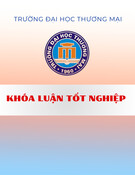
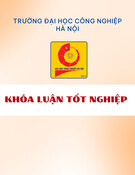
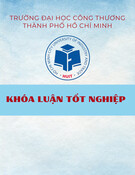
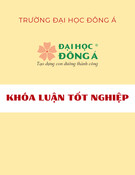

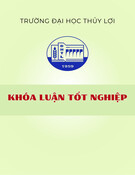


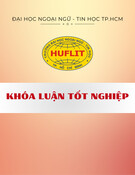
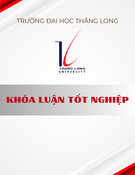



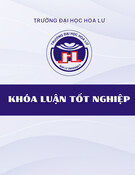
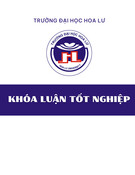
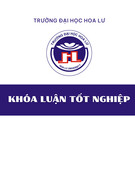
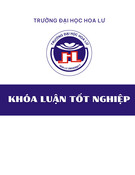
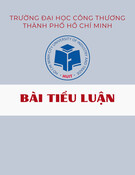
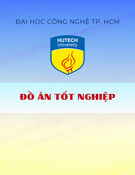
![Thẩm định dự án đầu tư Ngân hàng BIDV: Bài tiểu luận [chuẩn nhất]](https://cdn.tailieu.vn/images/document/thumbnail/2025/20251018/kimphuong1001/135x160/7231760775689.jpg)
